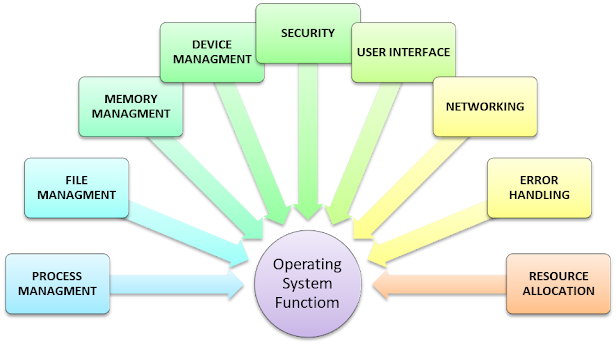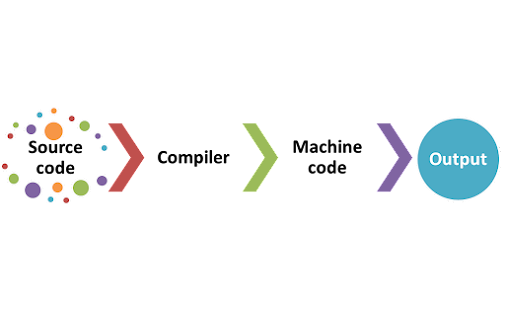Type of Software, Definition, type & Examples
Type of Software, Definition, type & Examples
Introduction
हिंदी में पोस्ट (कंटेंट ) के लिए निचे दिए गए लिंक पर click करे
What is Software
Software & its Categories
Application Software
Application programs are programs created by users to carry out specific tasks. They are designed for unique functions and are typically used for the same tasks repeatedly. Many of these application programs are available for purchase as software packages. These packages can be customized slightly to meet individual needs and system requirements. Standard software packages for applications like Payroll, Financial Accounting, Inventory Control, and billing are readily available. Enterprise Resource Planning (ERP) packages, such as BAAN, PeopleSoft, and Oracle Financials, play a significant role in enhancing the efficiency of large-scale industries and organizations by improving the quality of Administration, Production, and Planning in inventory management. Application software is basically designed according to need for requirement. Application software can be developed using a computer language. These are developed in high- level languages An application can be self-contained or a group of programs. These can further classified into
General purpose
Specific Purpose
General Purpose software
Personal Productive software Eg:-Word/Excel
Multimedia software:-Powerpoint/photoshop
Internet software:-web browser/email etc
Specific purpose s/w(Custom s/w)
Custom software is typically tailored for a specific industry or department within a company, such as a program for tracking garment production or managing a restaurant or Library or Educational institutes and many more. Vertical software, designed for specific job functions, tends to be expensive because of the limited market size.
हिंदी में पोस्ट (कंटेंट ) के लिए निचे दिए गए लिंक पर click करे
System Software
 |
| What are System software |
software’s which are used to operate whole computer system is known as system software. System software is comprised of a set of programs that enable users to effectively utilize computers. System software is a collection of programs, which are designed to operate control and extend the processing capability of the computer system. These programs are responsible for carrying out essential functions, such as organizing and maintaining data files, translating programs written in different languages into a format that can be executed by the hardware, scheduling jobs, and providing assistance in various other aspects of computer operations. so we can say software which are used to operate whole computer system is known as system software.
They can be classified into
1)Operating System
2)Device Drivers
3)Language Translators
4)Utility Programs
Operating Systems
Functions of operating system
 |
| Function of Operation system |
Utility program
Utility program is a system software that allows a user to analyze, configure and Maintain the computer. Utilities are programs, which performs a specific function. It performs a specific task related to the management of computer. Utilities are part of system programs. Utility programs are generally supplied by the computer manufacturer and also available for the call up by the operating system. This software is designed to perform any task with operating system. Most utility software are inbuilt like scandisk, compiler, interpreter etc. We can increase the speed of computer and take maintenance care through utility software. Utility program related to software maintenance, unnecessary files are created by system and they are deleted by utility program. Example: -. Antivirus.
Device Driver
A device driver is a specialized software component that facilitates communication between an operating system and a specific hardware device. Its primary purpose is to act as an interface, enabling the OS to interact with and control the functionalities of hardware components such as printers, graphics cards, or storage devices.
हिंदी में पोस्ट (कंटेंट ) के लिए निचे दिए गए लिंक पर click करे
Application Software and its Types
Word processor
 |
| Application software word processer |
Spreadsheet
 |
| SpreadSheet |
Presentation software
The main function of this tool is to exhibit information in a slide show format. It commonly comprises a text editor, an image viewer, and a slide show system.
 |
| Presentation software |
DBMS Software
The database management system (DBMS) is responsible for handling incoming data, arranging it in an organized manner, and offering methods for users or other programs to modify or extract the data. Various examples of DBMS include MySQL, PostgreSQL, Microsoft Access, SQL Server, File Maker, Oracle, RDBMS, dBASE, Clipper, and Fox Pro.
 |
| DBMS Software |
DTP Software
 |
| DTP software |
Gaming Software
 |
| Gaming software |
software used to develop computer games ex Unity Unreal Engine GDevelop
Educational Software
Communication Software
 |
| Communication software |
software used for communication purpose ex Google Meet Whatsapp
Business & ERP Software
 |
| Business & ERP software |
Graphics & Multimedia Software
 |
| Multimedia software |
Software used for multimedia purpose ex Adobe Premier DJ Software Sound Forge
हिंदी में पोस्ट (कंटेंट ) के लिए निचे दिए गए लिंक पर click करे
Language Translators & Converters
The translator is a software program that serves as a mediator between the user's source code and the machine. It enables the conversion of source code written in one language into another language. By translating all inputs into machine language, which is comprehensible to the computer, the translator allows a digital computer to accept both digits and alphabets as input.
Assemblers
The Assembler software is utilized to transform assembly language source code into machine language. It employs mnemonic codes to convert the mnemonic operation codes into their corresponding machine language equivalents. Additionally, it assigns machine addresses to symbolic labels. However, presently this software is no longer utilized.
Working of Assemblers
A programmer develops a program by utilizing a series of instructions. This sequence of assembler instructions, referred to as the source code or source program, is subsequently provided to the assembler program upon its initiation. The assembler program then converts the source code into machine language. The resulting output from the assembler program is known as the object code or object program.
 |
| working of Assemblers |
Compilers
Working of Compiler:
Program syntax is validated. The entire program is checked simultaneously. The primary objective of compiling source code is to produce an executable program. Examples of compiler based language: C, C++, JAVA
 |
| How Compiler Works |
Interpreters
An interpreter functions like a compiler. It takes one statement of program at a time and translates into machine code and run it then comes the turn of second statement and this process continues until the end of the program.
It executes instructions written in a programming language but do not produces the executable file Through this software we convert high level language to machine language. This software occupies more space of memory and debugging process is also very slow. Interpreter is oldest translator. Advance form of translator is compiler.
 |
| How Interpreter Works |
|
|
Compiler |
Interpreter |
|
1 |
It
compiles a whole program at a time. |
Interpreter
read a single line at a time. |
|
2 |
Its
debugging process is fast |
Its
debugging process is slow |
|
3 |
It
shows all errors at a time. |
It
shows errors one by one |
|
4 |
It
occupies less space of memory |
It
occupies more space of memory |
|
5 |
Compiler
reads source code every time before execution. |
Interpreter
reads source code only one time at the beginning. |
|
6 |
If
any change is made in program it will not read the program. |
If we
change anything in your program then it will read the program. |
Ascii
American Standard Code for Information Interchange, commonly known as ASCII, is a character encoding standard utilized in computers and other devices to handle text files. It is a subset of Unicode and comprises a character set consisting of 128 symbols. This set encompasses uppercase and lowercase letters, numbers, punctuation marks, special characters, and control characters. Each symbol within the character set can be represented by a Decimal value ranging from 0 to 127.
Ascii -7-128 chracters
हिंदी में पोस्ट (कंटेंट ) के लिए निचे दिए गए लिंक पर click करे
Unicode
Unicode, an internationally recognized encoding standard, facilitates the representation of individual characters in diverse text files, web pages, and documents.
ASCII was initially intended for basic English characters, while Unicode was developed to encompass characters from all languages across the globe. The standard ASCII character set is limited to 128 characters, whereas Unicode has the capability to support roughly 1,000,000 characters. Moreover, ASCII uses one byte to represent each character, while Unicode can utilize up to 4 bytes for each character.
There are several different types of Unicode encodings available, with UTF-8 and UTF-16 being the most prevalent. UTF-8 has become the standard character encoding used on the Web and is also the default encoding used by many software programs. While UTF-8 can accommodate up to four bytes per character, it would be inefficient to allocate four bytes for frequently used characters. As a result, UTF-8 utilizes only one byte to represent common English characters. European (Latin), Hebrew, and Arabic characters are represented with two bytes, while Chinese, Japanese, Korean, and other Asian characters require three bytes. Additional Unicode characters can be represented with four bytes.
ISCII
The term ISCII represents Indian Script Code for Information Interchange, which was established as a standard by the Bureau of Indian Standards (IS13194:1991) in the year 1991. ISCII operates as an 8-bit standard, conforming to the ASCII standard for the lower 128 characters (0-127). The higher 128 characters (128-255) are specifically allocated for encoding characters from various Indian scripts. Unicode has largely preserved the ISCII encoding strategy within their own encoding system. As a result, texts encoded in ISCII-1991 can be seamlessly converted to Unicode values and vice versa, ensuring that no information is lost during the conversion process.
conclusion
In conclusion , this blog cover a brief description of following topics
Software, Type of Software, system & Application software, compilers, assemblers, interpreters, operating System & its function, ASCII, Unicode, ISCII.
In summary, I can say that these topics are related to Fundamental of Computer and very helpful for those who pursuing BCA,PGDCA, DCA ,'O' Level Courses from different universities
I hope this blog helps you a lot Happy learning....
Frequently Asked Question(FAQ)
What is Software ?
Software refers to a collection of instructions, data, or programs that are utilized to operate computers and carry out specific tasks.
What is Operating System ?
An operating system (OS) is a crucial software component that acts as an intermediary between computer hardware and user applications.
What are Language Translaters or converters ?
The translator is a software program that serves as a mediator between the user's source code and the machine.
What are Assembler ?
The Assembler software is utilized to transform assembly language source code into machine language.
What are Compilers ?
A compiler is program’s that reads a program and translate it into machine code.
What are Interpreter ?
It executes instructions written in a programming language but do not produces the executable file .
What are Ascii ?
It is a character encoding standard utilized in computers and other devices to handle text files. .
What are Unicode ?
Unicode was developed to encompass characters from all languages across the globe.










![E-Governance, Democracy [IT Trends PGDCA/DCA]](https://blogger.googleusercontent.com/img/b/R29vZ2xl/AVvXsEgvnUpIfVg3StmtzeGYrEklEaAGqGpNJGe3Jruo8bmYc2lwCRf-b_XiUSdyK6ZRnVclsjSXuyIeC3pG7fuWnud2SAv3QNc8opI3mLC5nqzEMqrzWNuFXDNFL574Y2yDoSwtJe7X2CoV-ZjyyUl072O11GoZbk24ycLndTQR224M7x9km0L0_UVxLDHDH4o/s72-w534-c-h284/qw2.JPG)
Post a Comment